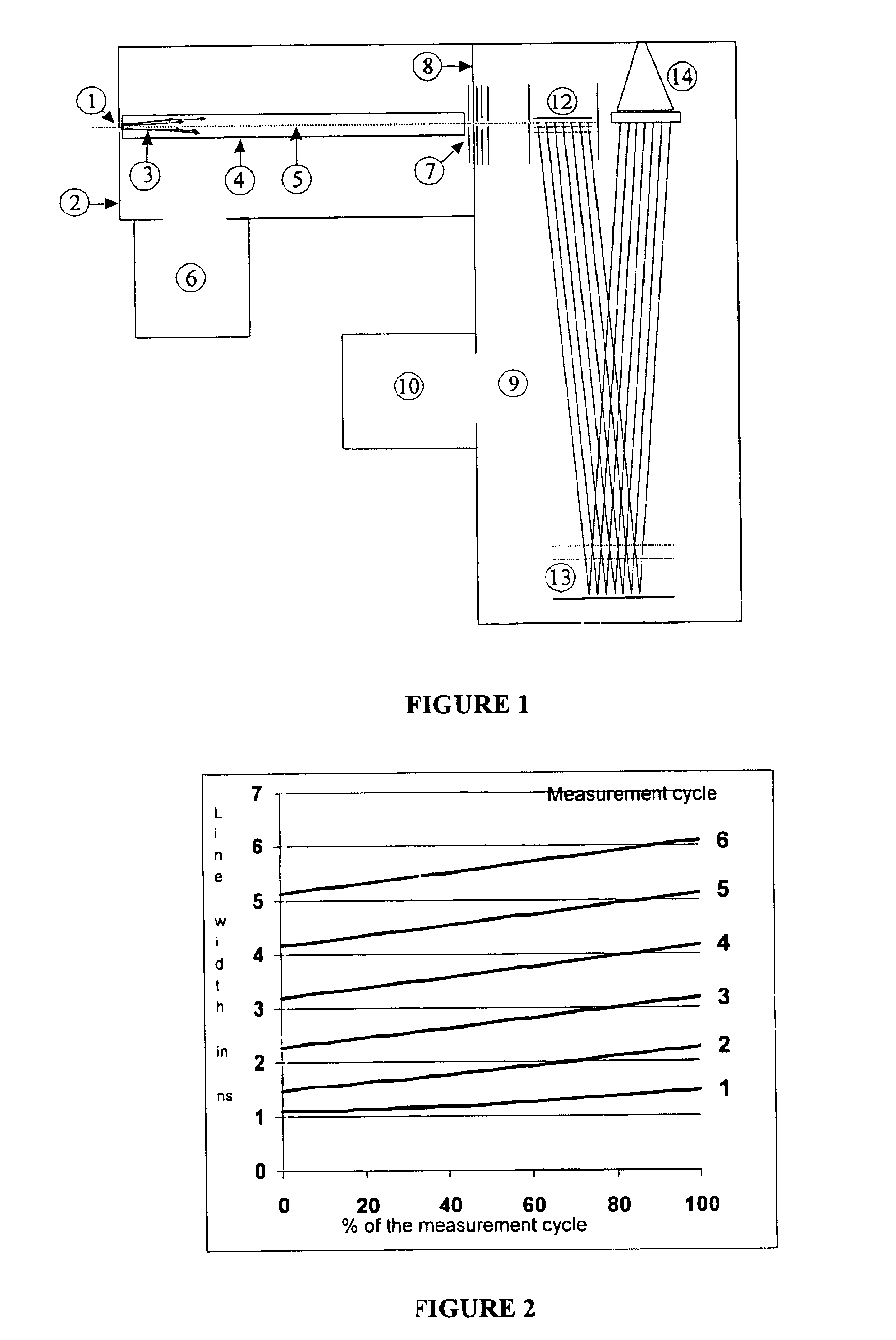High resolution method for using time-of-flight mass spectrometers with orthogonal ion injection
a mass spectrometer and orthogonal ion technology, applied in mass spectrometers, particle separator tube details, separation processes, etc., can solve the problems of extremely restricted dynamic measurement range, large dynamic range reduction, and use of adcs,
- Summary
- Abstract
- Description
- Claims
- Application Information
AI Technical Summary
Benefits of technology
Problems solved by technology
Method used
Image
Examples
Embodiment Construction
FIG. 1 is a schematic diagram of a time-of-flight mass spectrometer with orthogonal ion injection. A bundle (3) of ions with various initial energies and initial directions passes through an opening (1) in a vacuum chamber (2) and enters an ion guidance system (4) situated inside a gas-proof jacket. Damping gas enters the ion guidance system at the same time. The ions that enter are slowed by impacts with the gas. Because the ions in the ion guide system are subject to a pseudo-potential that is lowest at the axis (5), the ions accumulate at the axis (5). The ions spread out along the axis (5) as far as the end of the ion guide system (4). The gas in the ion guidance system is pumped out by the vacuum pump (6) attached to the vacuum chamber (2).
The drawing lens system (7) is located at the end of the ion guide system (4). An apertured diaphragm belonging to this drawing lens system is integrated into the wall (8) between the vacuum chamber (2) for the ion guidance system (4) and the...
PUM
 Login to View More
Login to View More Abstract
Description
Claims
Application Information
 Login to View More
Login to View More - R&D
- Intellectual Property
- Life Sciences
- Materials
- Tech Scout
- Unparalleled Data Quality
- Higher Quality Content
- 60% Fewer Hallucinations
Browse by: Latest US Patents, China's latest patents, Technical Efficacy Thesaurus, Application Domain, Technology Topic, Popular Technical Reports.
© 2025 PatSnap. All rights reserved.Legal|Privacy policy|Modern Slavery Act Transparency Statement|Sitemap|About US| Contact US: help@patsnap.com



